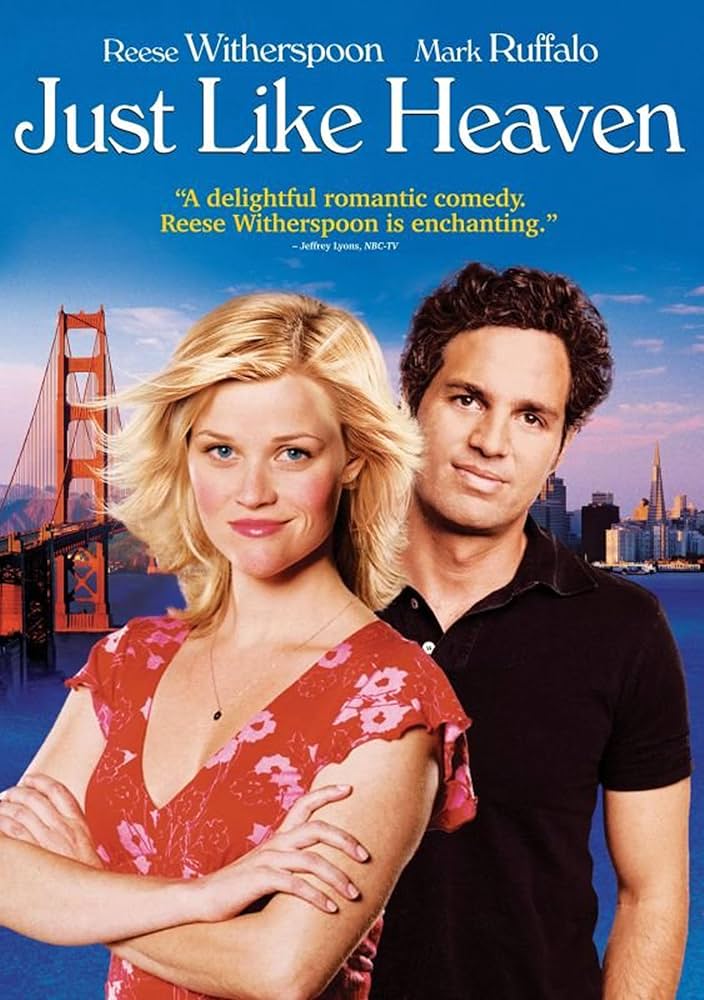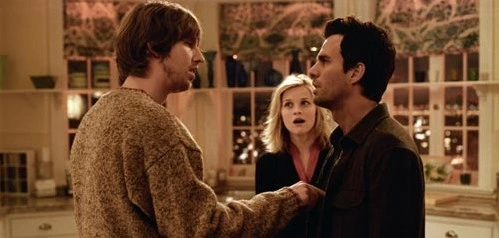
Hard as it might be to remember now, but there was a hot minute in the mid-2000s when Mormonism’s own Jon Heder, fresh off the lightning-in-a-bottle success of Napoleon Dynamite, seemed to have an outside chance of making the jump to actual mainstream Hollywood stardom. Certainly his supporting role in the 2005 Romantic-Comedy Just Like Heaven–when he played a laid-back California bookstore clerk who is somehow also the only real clairvoyant in all of San Francisco–hinted that he perhaps had slightly-wider range than his break-out role might suggest.

The film itself stars Rom-Com mainstay Reese Witherspoon and a pre-Marvel Mark Ruffalo as star-crossed lovers in the Bay Area. Checking off the usual boxes for this genre, she’s a career woman too busy for a relationship (an MD, in this case), while he’s a working-class hunk (a carpenter in this case, who can somehow afford to rent a loft in downtown San Francisco) harboring a sad secret. In time-honored Rom-Com fashion, they initially despise each other before finally falling in love by the end—the supernatural twist this time around being that she is a ghost unknowingly AWOL from her comatose body after a car accident, while he is the unwitting tenant who signs up to rent her place while her family agonizes over whether or not to pull the plug on her at the hospital.
Initially in denial about being a ghost, Reese Witherspoon angrily accuses Mark Ruffalo of being an intruder when they first meet in their shared apartment, and orders him out of her place. The “comedy” in this Rom-Com emerges when he in turn quickly realizes that she is in fact a ghost, and so calls in a montage of exorcists, ghost-busters, and other assorted crackpots to “cleanse” the apartment, all to no avail (for reasons not revealed till later in the film, Mark Ruffalo is the only person who can see her). The film makes no bones about the fact that these are all obvious charlatans and fakes.
Enter Jon Heder’s character: as an increasingly desperate Mark Ruffalo rummages through a local New Age bookstore for ideas on how to deal with his ghost problem, Jon Heder casually overloads him with Spiritualist book recommendations until he finally agrees to just visit the apartment directly (I obviously don’t remember any of these characters’ names). In contrast to the theatricality of the frauds who preceded him, Jon Heder immediately detects Reese Whitherspoon’s presence (though still doesn’t see her) while he’s sprawled lackadaisically on the couch. He also immediately senses the immense amounts of hostility directed at him from her, with enough specificity that even she begins to think he might be the real thing. Crucially, he is also the one who realizes that this spirit is somehow still alive.

Jon Heder’s brief scene here in fact proves the turning point of the film, for it is when he tells Mark Ruffalo that he needs to let her go; when Ruffalo yells in exasperation that he’s been trying, Heder clarifies that the ghost is not who he’s talking about. Reese Whitherspoon then quickly deduces that Ruffalo is in fact heart-broken, and lays into him even harder, viciously mocking him for getting dumped. After Mark Ruffalo storms off angrily to the roof, Jon Heder says simply, “Word to the wise, ghost lady, have some respect for the dead.” That is the moment when Whitherspoon realizes Ruffalo is a widower, that he has been grieving this entire time, which initiates a rapprochement between them that eventually blossoms into love, as well as him finally figuring out how to get her spirit back into her body in the film’s climax.
The rest of the plot can be read on Wikipedia—or you can just watch the film itself. Tis the season, after all. Yet despite how closely this Rom-Com hews to a well-worn formula, I can’t help but reflect how serendipitous it is that the sole character in the entire movie (a film that acknowledges the necessity of the union of the spirit and body for a fullness of joy, mind you) who really does know how to pierce the veil, who matter-of-factly accepts the existence of spirits, who treats ghosts not as a horror to be expelled nor something exotic to be fetishized but as quotidian companions in our lives, who is committed to the salvation and redemption of the dead, was portrayed by a practicing member of the Church of Jesus Christ of Latter-day Saints.
